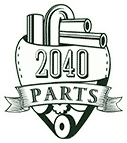1996-2005 Mercury Sable V6 New Cooling Radiator Replacement Assembly Set on 2040-parts.com
La Puente, California, US
Radiators & Parts for Sale
 Brand new cooling radiator unit 1992-1993 lexus es300 es 300 3.0 v6 w/toc a/t(US $48.15)
Brand new cooling radiator unit 1992-1993 lexus es300 es 300 3.0 v6 w/toc a/t(US $48.15) Brand new radiator unit for 1997-99 hyundai accent l4 1.5l auto manual a/t m/t(US $46.95)
Brand new radiator unit for 1997-99 hyundai accent l4 1.5l auto manual a/t m/t(US $46.95) Dual fan assembly (dorman# 621-493)(US $227.81)
Dual fan assembly (dorman# 621-493)(US $227.81) 1995-1996 oldsmobile aurora 4.0l v8 1-row cooling radiator replacement assembly(US $91.24)
1995-1996 oldsmobile aurora 4.0l v8 1-row cooling radiator replacement assembly(US $91.24) 1991-1993 dodge daytona 2.5l 3.0l l4 v6 cooling radiator replacement assembly(US $66.04)
1991-1993 dodge daytona 2.5l 3.0l l4 v6 cooling radiator replacement assembly(US $66.04) 1984-1991 toyota 4runner 2.4l automatic cooling radiator replacement assembly(US $68.35)
1984-1991 toyota 4runner 2.4l automatic cooling radiator replacement assembly(US $68.35)
Design Development: Ford Edge concept
Thu, 08 May 2014Vehicle type mid-size SUV ConceptLength 4,689mmWidth (exc. Mirrors) 2,119mm Height 1,699mmWheelbase 2,849mm Chief exterior designer George BucherExterior design manager Kevin GeorgeSenior exterior designers Steve Gilmore, Shawn WehrlyInterior design manager Hak Soo HaInterior lead designers Yuichi Ogura & Zulf AliTechnical build manager Bruce Youngs Project started January 2013 Project completed October 2013Launch Los Angeles Auto Show 2013 The second-generation Edge mid-size crossover will be a global product, sold in North America, Europe, China and South America by 2015. The 2013 LA Auto Show concept prefaced its arrival closely. Sitting below the Explorer and above the Escape (or Kuga in Europe), the original Edge was introduced in 2006.
Hyundai Genesis Concept
Mon, 26 Mar 2007By Liz Turner First Official Pictures 26 March 2007 03:46 Hyundai Genesis Concept: the lowdown The first official pictures of Hyundai’s Genesis concept confirm that the company will soon be snapping at the heels of Lexus and Infiniti. The new executive saloon will be unveiled at the New York Show in April. There’s a 32-valve, 4.6-litre V8 under the hood sending power through a ZF six-speed auto and limited-slip diff to the rear wheels; we’re promised a 0-60mph time of less than 8.0 seconds.
Volvo Group plans wirelessly charged bus line
Tue, 20 May 2014There's one bit of futuristic transportation technology that seems to get trotted out almost as often as autonomous cars, electric cars and flying cars: Inductive, or wireless, charging for city buses. It's not as sexy or as memorable as the perpetually out-of-reach commuter-grade Harrier jet, but it uses proven technology (GM's EV-1 uses inductive charging, as do electric toothbrushes) to save or eliminate fuel and to reduce emissions. And unlike the flying car, induction-charged buses are hardly fantasy: They've been used in European cities for over a decade, South Korea started testing a fleet last year and Utah got in on the act recently.

